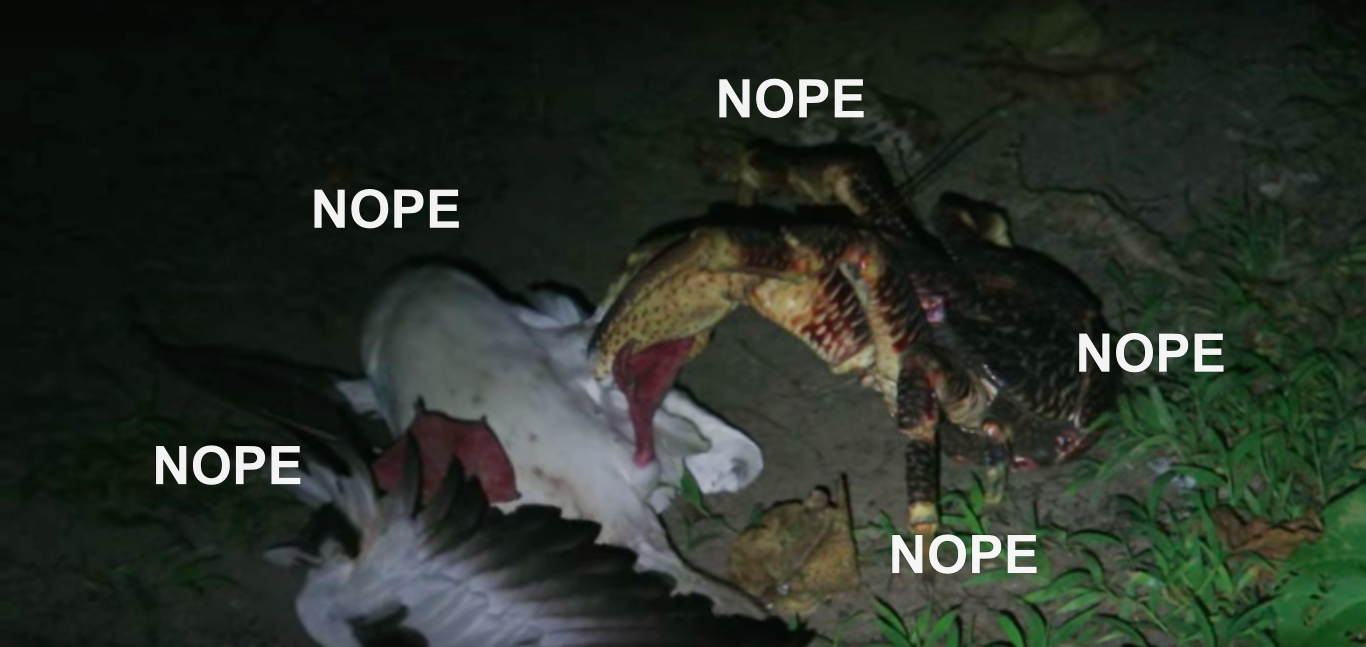Mark Laidre, a biologist from Dartmouth College currently working on the remote islands in the Indian Ocean, witnessed something peculiar on one of his treks. He found a coconut crab— a specie which happens to be the world’s largest land invertebrate– killing and then eating a red-footed bobby seabird.
A coconut crab is a humongous animal that can have a leg span wider than three feet and weigh more than four kilograms. They were named after the fact that they are capable of opening up coconuts with their pincers. Laidre said that prior to witnessing the gruesome killing of the seabird, he had only heard tales about the coconut crab killing rats.
During one of his evening treks to study the burrows of the coconut crab, Laidre saw one attack a sleeping bird. According to him, the crab scaled the tree where the bird was and dragged it off a branch and onto the ground. The crab then broke the bird’s bones with its pincers. Laidre managed to film a brief part of the gruesome moment.
“I didn’t have the heart to videotape five coconut crabs tearing apart the bird later,” he said. “It was a little bit overwhelming. I had trouble sleeping that night.”
After conducting further research into the matter, Laidre found that coconut crabs indeed have a major effect on local bird populations around the archipelago. On one island called Diego Garcia, he found that there were about a thousand coconut crabs in a 15-kilometer path and no nesting birds. In the West Island, on the other hand, no crabs were found and there is an abundance of ground nests.
You can watch the video of the crab attacking a bird below. Be warned, though, that it is (like Laidre said) upsetting:

We don’t know about you guys, but we never thought we’d be afraid to go to the beach because of a crab. Sharks, definitely. Sea urchins, sure. But crabs? Then again, we haven’t heard of crabs attacking rats and birds before.



